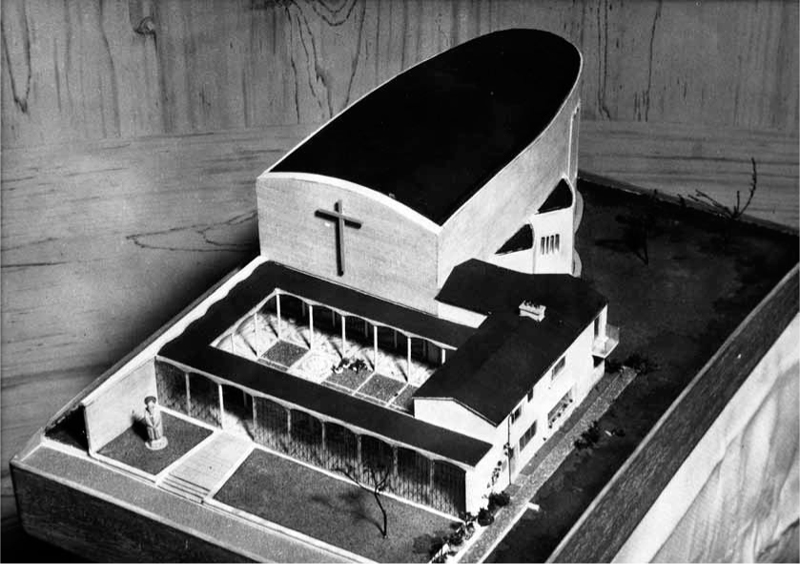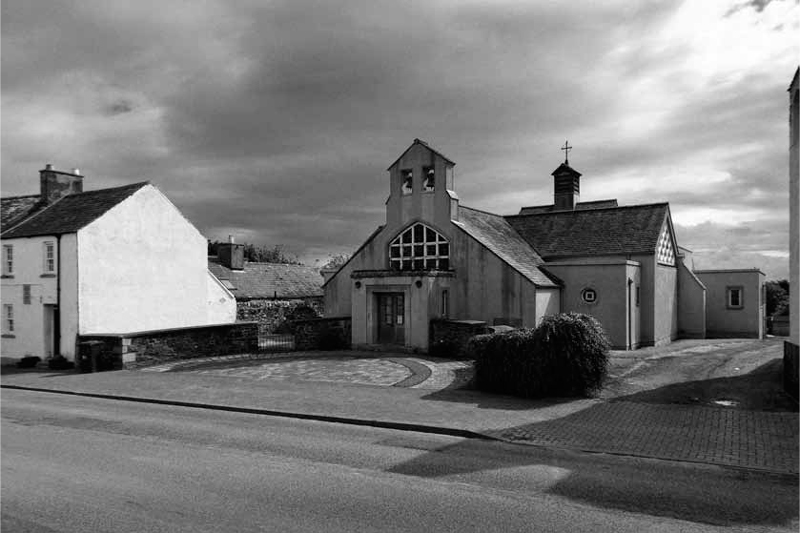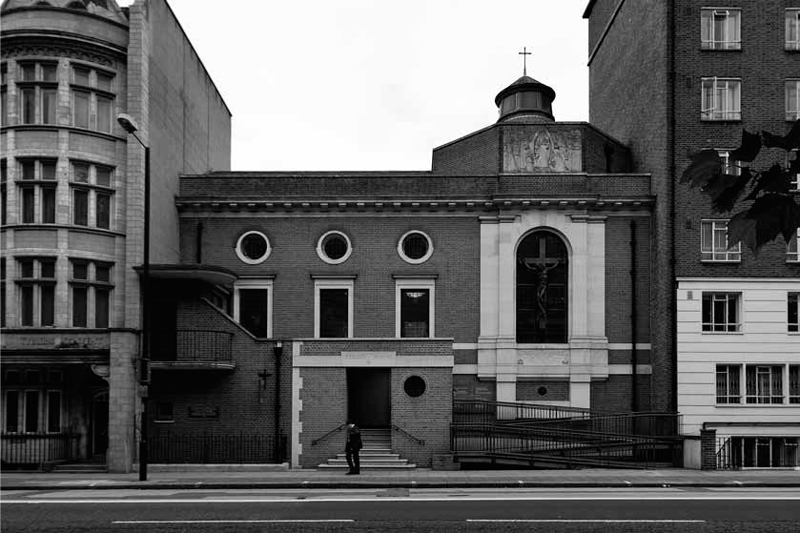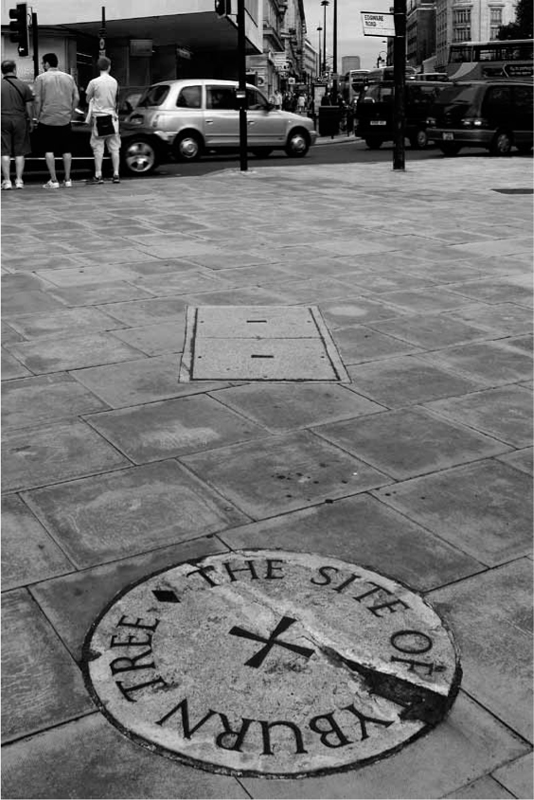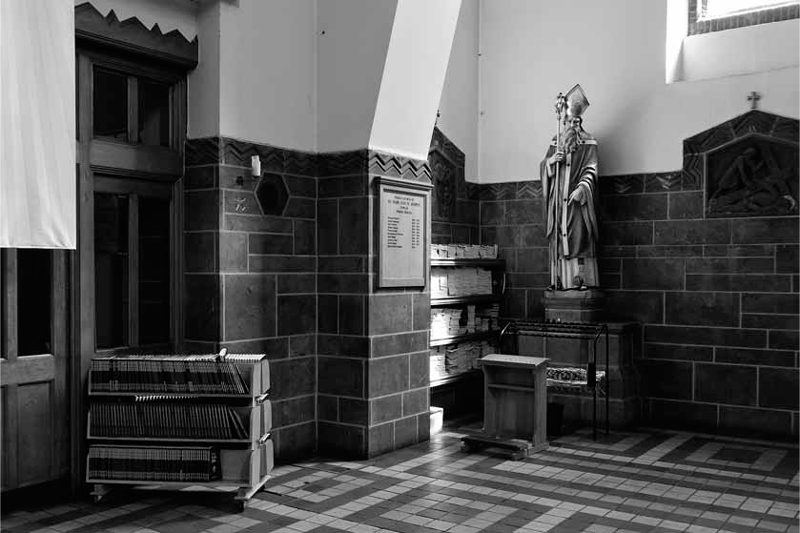9
Ritual and Community
Turner applies the notion of communitas, forged in pilgrimage ritual, to show how pilgrimages and their shrines can also lend themselves to the construction of national identities. Catholicism, he argues, often mobilises national sentiments to stimulate religious practice, while nationalism can receive a sacred status through its endorsement within religion.1 The revived pilgrimages of post-war Britain were overlaid with appeals to communal identities, both Roman Catholic and national. When the faithful engaged in religious rituals in environments overlaid with symbols of national and religious identity, they enacted that shared identity. If this identity-forming aspect of ritual and religious space was true of pilgrimages, it was also true of more everyday religious practices. Benedict Anderson and others argue that the social conformism of ritual lends itself to the imagining of communities: ritual creates a commonality of identity amongst its immediate actors and links them to all those others who share its actions.2 Rituals surrounding the building of a church and those involving civic space articulated communities of the parish and the city and brought them into being.3
Post-war Catholicism in Britain, however, was largely a religion of immigrants and often viewed as un-British. The imaginative geographies of pilgrimage might therefore be seen as attempts to claim a place for the Church within the nation, affirming the identity of a British (or at least a Scottish, English or Welsh) Roman Catholic community in opposition to its perceived foreignness. Meanwhile Irish and other immigrants sometimes sought to display their own national identities in church architecture, sometimes in tension with such British claims. National identities, however, were subsumed into the broader identity of Roman Catholicism, centred on Rome; and communities were also formed around the local centres of the parish and the city. Catholic identity in Britain was fragmented, focused on multiple centres and allegiances and in an uncertain relationship with the modern nation.
PILGRIMAGE AND THE NATION
While Marian pilgrimages such as those at Cardigan and Aylesford comprised locally situated variations on the international cult of the Virgin Mary, pilgrimages were also created around sites considered formative in the Catholic history of the nation. Two case studies illustrate this tendency: the shrine of St Ninian in Whithorn resulted from the revival of a medieval pilgrimage for Scotland, while a pilgrimage in central London manifested the modern cult of the Forty Martyrs of the Reformation in England and Wales. Both promoted the sense of a national Catholic identity through sacred rituals that retold history. One asserted the continuity of modern Catholicism with that of the past, nostalgically eliding the rupture of the Reformation, while the other brought that rupture to consciousness as a point of sacred memorial. Both forms had their place in reconciling Catholics to a nation that had historically rejected them.
At Whithorn on the south-west coast of Scotland a pilgrimage to St Ninian was revived in the early twentieth century under the bishop of Galloway, William Turner, with the encouragement of John Crichton-Stuart, the Marquess of Bute.4 St Ninian was a fifth-century Christian missionary to the Picts, bishop of a diocese dedicated to St Martin and the subject of a major medieval pilgrimage cult until its prohibition in 1581.5 The twentieth-century Catholic revival of this pilgrimage attempted to reinstate an element of the lost ritual landscape of medieval Scotland. Its focus was a cave behind a rocky beach four miles from the town, reputed to have been Ninian’s chapel, while a ruined Norman priory and cathedral on the town’s high street, where the saint was thought to be buried, were further landmarks. On St Ninian’s feast day in September, thousands of pilgrims would gather at the mouth of the cave to attend Mass at a temporary altar and to walk in procession through the town. The cave bore few traces of ancient use and was unlikely to have been a feature of the medieval pilgrimage. Its adoption in the twentieth century romantically evoked the hardships of the early Christian missionary. It was literally a liminal place, sited between land and sea, a space without conventional sacred or secular function, at the edge of the nation and, perhaps significantly, also close to the border with England.
The Catholic church of St Martin and St Ninian at Whithorn was used in these pilgrimage celebrations, but its Victorian iron building was too small for the cult’s growing popularity. The parish acquired a large plot of land on the high street around 1951, and, with the patronage of Crichton-Stuart’s grandson Lord David Stuart, launched a campaign for a pilgrimage church. Stuart commissioned Scottish architect Basil Spence for a design and urged the diocese to embark on a ‘National appeal for a National Shrine of St Ninian’.6 Spence’s design alluded to the mythic cave in a modern architecture tinged with historic and national references (Figure 9.1). The church was to be set back from the street and a stone figure of St Ninian placed before it. Pilgrims would pass through a screen, arriving at a cloistered courtyard paved with stones taken from the beach in front of the cave.7 The church’s long nave had cave-like granite walls curving inwards and daylight entered through slits angled towards the sanctuary.8 Spence’s design suggested the atmosphere of Ninian’s primitive church, and his building would have complemented the pilgrims’ experience of the seashore shrine. It also suggested a Scottish identity in its architecture with a monumental use of masonry and small castle-like windows.
9.1 Basil Spence, design for St Martin and St Ninian, Whithorn, 1951. Photograph of model. Source: © Courtesy of Royal Commission on the Ancient and Historical Monuments of Scotland, Spence, Glover and Ferguson Collection. Licensor, www.rcahms.gov.uk
A model was shown at one of the annual pilgrimages to great excitement, but after the bishop’s death in 1952 the project was shelved, as his successor Joseph McGee disliked Spence’s modernism.9 Nevertheless McGee asked all the parishes of the diocese of Galloway to contribute to a building fund, arguing it was ‘not simply … a matter of supplying the needs of the Catholic community of Whithorn but … one involving the prestige of the Catholic Church in this Diocese and, indeed, in Scotland’.10 Goodhart-Rendel was commissioned for a modest building seating only 200. His design followed Arts and Crafts principles with a local vernacular style, its plain neo-Gothic windows and harled exterior recalling churches of the seventeenth and eighteenth centuries (Figure 9.2).11 In that period, Scottish Catholics could rarely worship in churches of this kind. Goodhart-Rendel’s design therefore implied a nostalgic reminder of underground Catholicism, while also resembling a typical Scottish parish church, perhaps helping to assert a general national allegiance for Catholicism in Scotland. The church’s simplicity avoided competing with the priory opposite, allowing the original medieval structure to retain its authenticity as the real shrine of St Ninian. The new church, opened in 1960, was too small for the crowds of pilgrims, who instead stood on a sloping strip of outdoor space behind it facing a permanent altar built at the church’s rear wall.
9.2 St Martin and St Ninian, Whithorn, by H. S. Goodhart-Rendel, 1955–60. Photo: Ambrose Gillick, 2012
In this attempt at reviving a medieval pilgrimage and creating a national shrine the parish and the diocese shaped a ritual that constructed a modern Scottish Catholic identity for its participants through an enactment of historical narrative. The procession between priory, church and cave revived the medieval pilgrimage so that pilgrims could identify themselves with their ancient forebears. In celebrating a saint who helped convert Scotland to Christianity, they confronted a point of origin of their faith in the history of the nation. Yet the pilgrimage was a re-telling rather than a re-enactment of history. The open-air gathering reinforced the absence of an adequate church; the makeshift altar on the beach made the absence of monuments felt; the medieval priory was in ruins. Though the Reformation was elided, it was everywhere present. The procession through the street, led by a priest in vestments and servers in cassocks, further defined the pilgrims as Catholic, distinct from their contemporary Christians who had abandoned such activities. While the pilgrimage asserted a Catholic claim to Scottish history, it also constructed an identity for modern Catholics around the nostalgic longing for an irretrievable past.
While this pilgrimage – and a similar revived cult of St Margaret at Dunfermline – contributed to the creation of a modern Scottish Catholic identity, it countered the identity of the Gaidhealtachd, the Gaelic Catholicism of the Highlands and Western Isles of Scotland that had persisted beyond the Reformation. When a 7m high statue of Our Lady of the Isles by Hew Lorimer was erected facing the Atlantic on the coast of South Uist, it was interpreted by the Catholic press and the hierarchy on one hand as marking a distinctively local phenomenon of fidelity to the Virgin and, on the other, as demonstrating Gaelic Catholicism’s continued allegiance to Rome through orthodox devotional practices. Indeed its inauguration on the feast of the Assumption in 1958 linked it to the centenary of Lourdes, celebrated throughout the world.12 Devotion to St Ninian, on the other hand, constructed a less controversial image of a modern Scottish Catholicism of ancient national origin, allied to prevailing Protestant narratives of Christianity though celebrated in a specifically Catholic manner.
9.3 Tyburn Convent, London, by F. G. Broadbent & Partners, 1960–63. Photo: Robert Proctor, 2010
While some pilgrimages bridged the Reformation to evoke medieval Christianity, others sought to celebrate a national Catholic identity as one of defiance and martyrdom by remembering the Reformation itself. The Forty Martyrs of England and Wales, executed for their faith in the sixteenth and seventeenth centuries, became particularly important from 1960 when the bishops of England and Wales decided to press for their canonisation, finally achieved in 1970 under Paul VI. Since canonisation required evidence of miracles, campaigns of prayers and events were organised, including pilgrimages to associated sites.13 One was an annual pilgrimage in honour of the martyrs in central London. A procession began at the Old Bailey court, the site of Newgate prison where many of the martyrs were held, and traced their journey to martyrdom at Tyburn. The landscape of London had irredeemably changed: not only had Newgate disappeared, but Tyburn itself was merely a road junction. This pilgrimage nostalgically reimagined the contemporary environment, inscribing it through ritual with a hidden historical form, sacralising the banal and secular city and claiming it for a Catholic identity.
9.4 Plaque at Marble Arch, London, commemorating the site of the Tyburn gallows, laid in 1964. Photo: Robert Proctor, 2010
Since 1903, part of a Regency terrace on Bayswater Road had been occupied by a convent of French nuns and named after Tyburn.14 Bombed during the war, it was planned to rebuild it in the 1950s as a ‘national shrine’ to over 100 Tyburn martyrs, every diocese in England and Wales claiming at least one of the martyrs as their own. It was speculated that ancient trees in the convent garden might have been used as gibbets, giving them the status of relics, and the foundation stone of the new church, laid in 1961 by Cardinal Godfrey, contained a piece of stone from one of the martyrs’ prisons in the Tower of London.15 The new building was designed by F. G. Broadbent & Partners (Figure 9.3). On the ground floor below the convent chapel was a shrine chapel for pilgrims and visitors containing a life-sized replica of the triangular Tyburn gallows placed as a ciborium over the altar, and reliquaries of the martyrs lined its walls.16 Outside, a balcony became the focus of pilgrimage devotions: it was used at the culmination of the procession for a sermon and for Benediction of the Blessed Sacrament to the crowds who gathered in the street below.17 In 1964, on the traffic island nearby at Marble Arch, assumed to be the site of the Tyburn executions, a stone marker was laid in the pavement, a cross in its centre asserting its religious significance, instantly readable to British Catholics as a place made sacred by the blood of martyrs, consecrating a sacred place in the secular urban landscape (Figure 9.4).
The campaign of fundraising for the shrine created a sense of national Catholic community, including spectacular pageants performed at football stadiums throughout the country and widespread devotions to support the cause of canonisation. Many churches were dedicated to one or all of the Forty Martyrs. At St Thomas More, Knebworth, for example, Broadbent designed another Tyburn gallows as a ciborium over an altar that represented the block on which its patron saint was beheaded, bringing an element of the London shrine to this village church.18 The cult of the Reformation martyrs celebrated the rupture between the nation and Roman Catholicism, identifying Catholics in Britain with the persecuted saints. The Tyburn pilgrimage could also be adapted to a shared identification with other persecuted Catholics: in 1957, a silent march of 15,000 men from Hyde Park, next to Tyburn, to Westminster Cathedral protested against religious intolerance in eastern Europe, particularly Poland and Hungary, with many exiles taking part in the event. The Tablet reported:
Here, within sight of the spot where so many English martyrs died for the Faith in an earlier century, was being actualised our need to identify ourselves with those members of Our Lord’s Mystical Body who are suffering and dying for the Faith now, in the twentieth century, in other parts of the world.19
NATIONAL IDENTITY
In these cases of the ritual re-telling of history to assert combined national and religious identities for England and Wales and Scotland, few if any commentators ever mentioned the fact that the majority of Catholics in Britain were of Irish ancestry. The shrines at Aylesford and Cardigan owed their success to the efforts of Irish clergy, yet the new pilgrimage landscape promoted native Catholic identities. This apparent contradiction was also sometimes present in parish church architecture.
The strength of Roman Catholicism in Britain by the twentieth century was largely a result of Irish immigration in the nineteenth century, when Ireland had been part of Britain. Throughout the twentieth century, continued immigration ensured that a significant proportion of Catholics in Britain maintained Irish allegiances and a sense of national identity. Parish churches could often become a site for the construction and display of Irish communities. The Church in Britain, however, particularly at the level of the diocese, preferred instead to emphasise its Britishness. The two movements generally coexisted but occasionally came to confrontation. Post-war immigration from other Catholic countries, particularly Poland and Italy, could lead to even greater complexity in the church’s role as a focus for national identities.20
Irish immigration peaked in the mid-twentieth century, becoming increasingly diffuse as new industries and transport attracted migrants to London, Birmingham and Cardiff and to industrial towns such as Coventry and Luton in addition to former strongholds such as Liverpool, Manchester and Glasgow.21 With Irish workers came Irish priests, recruited by British dioceses to compensate for a shortage of clergy in Britain and to cater for their countrymen: in the diocese of Birmingham in the mid-1950s, every parish had at least one Irish priest; in Leeds two-thirds of the clergy were Irish.22 Even as Irish identities amongst the descendants of earlier migrants abated, new arrivals sought to sustain a distinctive national culture.
Part of that culture was, for most, an adherence to Roman Catholicism, and the Catholic church was often the hub of immigrants’ social lives. Rex and Moore described the Catholic church in Birmingham as ‘the biggest Irish immigrant organization of all’ alongside lesser urban landmarks such as pubs and cafes. Secular social centres were incorporated into church sites: parish halls often had Irish bars and held Irish-themed events as fundraising ventures, often to fund a church building. Weekly attendance for Mass not only enabled the enactment of a ritual duty exactly as fulfilled in Ireland, but was also a social event.23 Family rituals such as weddings or funerals further reinforced Irish identity through the extensive kinship networks that became visible at these events. In and around and through the church building, the Irish reproduced and performed their identity.24
Church buildings were often given signs of Irish identity. A church’s dedication could celebrate a national saint and would be accompanied by an appropriate image. Many churches across Britain were dedicated to St Patrick in the post-war period – at Walsall, Coventry, Leicester, St Helens, Rochdale and many other places. St Finbar, seventh-century bishop of Cork, was commemorated with a parish in Liverpool. Dedications gave a familiar mark to a parish, extending to secular activities such as clubs and bars, sports teams and schools, where they became public bearers of a Catholic, and often a specifically Irish, identity. They were also associated with cult devotional practices that enabled the continued fulfilment of an aspect of national identity. In Ireland, the Sacred Heart had an especially strong following: a picture would be placed in the house over the fireplace, and the parish priest would dedicate the family to Christ, signing a document of consecration and attaching it to the wall with the picture, where a lamp would be kept constantly lit.25 The Sacred Heart shrine within a church evoked the memory of this family consecration, acting as a site of nostalgic evocation of home. Marian imagery was also prevalent in the home as well as the church in Ireland.26 The Catholic church building in Britain provided for the Irish immigrant a space with familiar resonances in the unfamiliar city.
Shrines to St Patrick were also common in post-war Catholic churches in Britain, endorsing devotion to the national saint. They were often positioned near the door – a position of lower status than the saints associated with Christ, but significant perhaps in that the figure of Patrick was seen on entering and leaving the church, a reminder of identity for the Irish faithful at the point where the familiar space of religious custom met the secular and foreign world. At Adrian Gilbert Scott’s church of Sts Mary and Joseph in Poplar, for instance, a statue of St Patrick was placed on a permanent pedestal near the door (Figure 9.5); and in a more modern interpretation, the church of St Patrick in Coventry designed by Desmond Williams around 1967 included a stained-glass panel of the saint lit with electric light and placed in the vestibule (Figure 9.6). Both were parishes with especially high concentrations of Irish immigrants.
9.5 Sts Mary and Joseph, Poplar, London, by Adrian Gilbert Scott, 1951–54. Statue of St Patrick; one of the Stations of the Cross by Peter Watts is also visible. Photo: Robert Proctor, 2010
